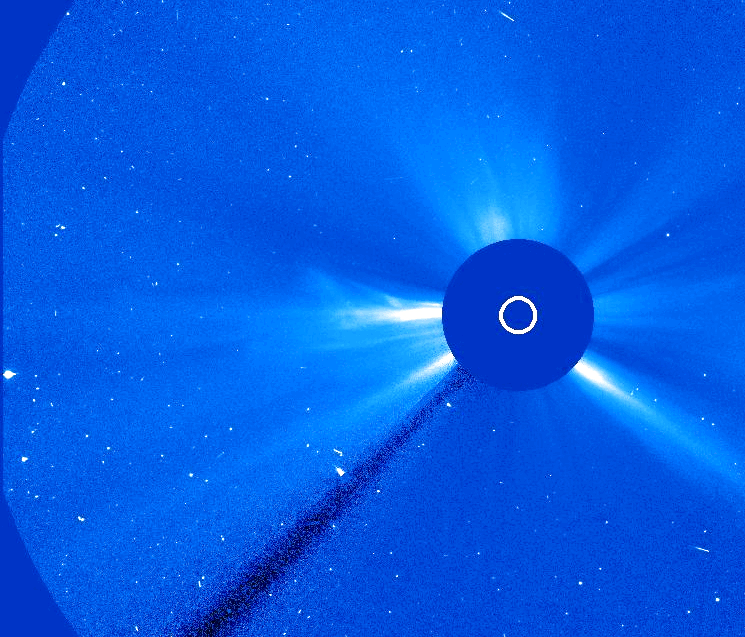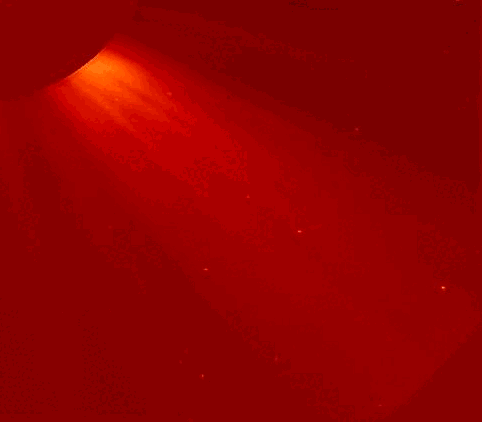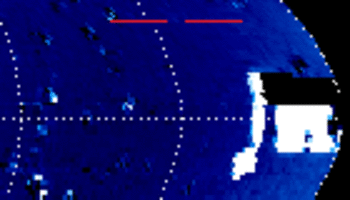Among the 5000 near-sun comets that have been identified in SOHO/LASCO, the vast majority belong to comet families (notably the Kreutz group). This post describes the case of C/1998 G3 (SOHO), a non-group comet that possibly reached a peak brightness of mag +4 or +5. Moreover, it was also sufficiently bright (at least in the UV) to be tracked in SWAN images two weeks prior to perihelion. This is particularly rare for any SOHO comet. Despite this, the comet faded from disintegration and/or observing geometry

C/1998 G3 (SOHO) was a non-group comet identified by Kevin Schenk, a NASA scientist of the SOHO/LASCO team. The comet can be seen entering the SOHO/LASCO C3 FOV on April 10th, 1998 (Fig. 1); rapidly moving southwest before entering the lower right portion of the C2 FOV on April 12th (Fig. 2). After exiting C2 the comet rapidly faded, appearing very diffuse as it moves north. This may have been due to the observing geometry (as implied here) and/or disintegration (consistent with its morphology, see below). Regardless, the comet was easily detectable in SOHO/LASCO before and around perihelion. I roughly estimate a peak magnitude of +4 or +5. This is significantly brighter than most SOHO comets. The brightness was likely enhanced by forward scattering.

Notice that the comet had an elongated appearance soon after entering the SOHO/LASCO FOV (Fig. 1). This morphology is indicative of a disintegrating comet. In fact, in SOHO/LASCO C2, the object shows no head (Fig. 2). By that time, I suspect it that it had already fallen apart. More specifically, it is likely that the “tail” was a “debris field”, rather cometary activity driven by an active nucleus. This type of feature is very commonly observed in SOHO/LASCO comets (Fig. 3).

According to the IAU, based on the limited observation arc (1998 04 10.5 – 1998 04 13.6), C/1998 G3 had a perihelion distance of only 0.0354 AU. Additionally, considering the intrinsically small size of the comet, it’s unsurpsing that it failed to survive its solar encounter. Considering its very faint nature, plus the observing geometry, I suspect that it would have been impossible to recover from Earth, (unlike the case of C/2015 D1), even using modern equipment.
Prior to entering the SOHO/LASCO FOV, the comet was visible for over a week in SOHO/SWAN UV “Comet Tracker” images (Fig. 4). This means that observations extend almost two weeks before its perihelion passage. As the SWAN images show, C/1998 G3 can be seen brightening before heading behind the SOHO/SWAN “solar” occulter. Interestingly, it was not listed as having been detected in SWAN by Mäkinnen et al. (2001). I suspect however that these “precovery” observations have been noted more recently. Whether they would be useful to constrain a better orbit is a different question, considering the low resolution of the SWAN images. Please let me know if I have overlooked a reference.

References
Mäkinen, J. T. T., Bertaux, J. L., Pulkkinen, T. I., Schmidt, W., Kyrölä, E., Summanen, T., … & Lallement, R. (2001). Comets in full sky maps of the SWAN instrument-I. Survey from 1996 to 1998. Astronomy & Astrophysics, 368(1), 292-297.
With the exception of the above sources, this blog post is based on my own examination and interpretations of the publicly available SOHO/LASCO and SOHO/SWAN data:
